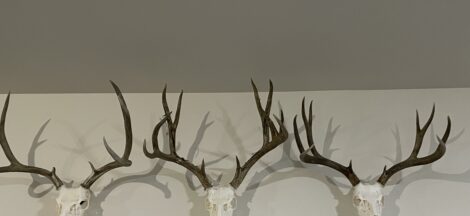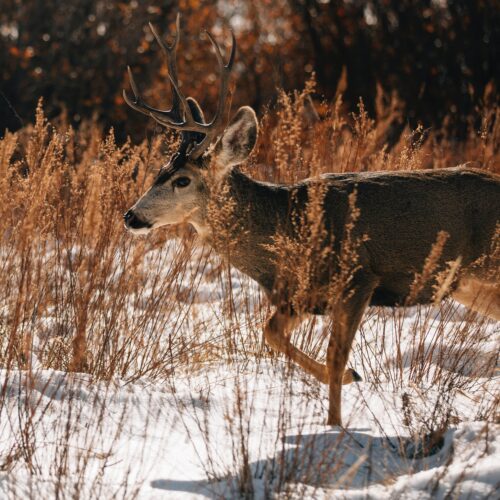The Science Behind Deer Attractants and Effective Usage?
When it comes to hunting, one of the most crucial factors in achieving success is attracting deer to your hunting area. Over the years, hunters have developed various methods to draw in these elusive animals, with deer attractants playing a significant role. In this article, we will delve into the science behind deer attractants and discuss how to use them effectively in your hunting endeavors.
Understanding the Science Behind Deer Attractants?
Deer attractants work by stimulating the deer’s senses, primarily their sense of smell, to lure them into a specific area. To understand how deer attractants work, we must first explore the biology of the deer’s olfactory system and their natural behaviors.
The Olfactory System of Deer
Deer possess an extraordinary sense of smell, which is vital to their survival. Their olfactory system, comprised of the nasal cavity and vomeronasal organ, allows them to detect scents from great distances and analyze their environment for potential threats, food sources, and mates. Their nasal cavity contains millions of olfactory receptors, while the vomeronasal organ, also known as the Jacobson’s organ, plays a crucial role in detecting pheromones emitted by other deer. This powerful sense of smell is what makes deer attractants so effective in drawing them closer to your hunting area.
Natural Deer Behaviors and Communication
Deer communicate with one another through a combination of vocalizations, body language, and scent marking. They use glands located on various parts of their bodies, such as the tarsal, metatarsal, and preorbital glands, to leave scent signals that convey information about their dominance, reproductive status, and individual identity. Understanding these natural behaviors and communication methods is essential for utilizing deer attractants effectively.
Types of Deer Attractants: From Food Sources to Scent-Based Lures?
There are several types of deer attractants available on the market, each with its unique method of attracting deer. Here are some of the most popular categories:
- Food-Based Attractants: Food-based attractants work by appealing to the deer’s sense of taste and hunger. Examples include mineral blocks, feed pellets, and food plots. These attractants can be highly effective in drawing deer to a specific location, as they provide a valuable source of nutrients and energy.
- Scent-Based Attractants: Scent-based attractants capitalize on the deer’s keen sense of smell to lure them in. Examples include doe-in-estrus scents, dominant buck scents, and cover scents. These attractants can mimic the natural smells of deer or their environment, playing on their curiosity or reproductive instincts.
- Visual Attractants: Visual attractants, such as decoys, work by appealing to the deer’s sense of sight. These attractants can help add realism to your setup and may be particularly effective when used in conjunction with scent-based lures.
Each type of attractant has its advantages and drawbacks, so it’s essential to choose the right one based on your hunting situation and the specific behaviors of the deer in your area.
Effective Usage of Deer Attractants: Tips and Strategies?
Now that we understand the science behind deer attractants and the various types available, let’s discuss some tips and strategies for using them effectively in your hunting pursuits.
1. Choose the Right Attractant for Your Situation
As mentioned earlier, different attractants serve various purposes and are more effective during specific times of the hunting season. For instance, doe-in-estrus scents are most effective during the rut, while food-based attractants may be more successful during the early season when deer are focused on building up their fat reserves. Consider the deer’s natural behaviors and the stage of the hunting season when selecting an attractant for your situation.
2. Be Mindful of Scent Control
When using scent-based attractants, it’s essential to minimize your own scent to avoid spooking deer. Wear scent-free clothing, gloves, and boots, and consider using scent-eliminating sprays to help control your odor. Be cautious when handling scent-based attractants, as the oils from your skin can contaminate the lure and potentially make it less effective.
3. Proper Placement is Key
Place your deer attractants in locations where deer are likely to find them and feel secure approaching them. This might include areas with ample cover, near well-used trails, or close to bedding and feeding sites. Make sure the attractants are visible and easily accessible to the deer while keeping your hunting stand or blind downwind and concealed from their view.
4. Use a Combination of Attractants
Combining multiple types of attractants can increase your chances of success. For example, using a food-based attractant alongside a scent-based lure can create a more enticing environment for deer. Similarly, placing a decoy near a scent-based attractant can provide visual reinforcement and encourage deer to investigate the area.
5. Be Patient and Persistent
Deer may not immediately respond to your attractants, especially if they are initially wary or unfamiliar with the area. Give the attractants time to work and remain patient in your hunting stand or blind. It’s not uncommon for deer to approach attractants cautiously, so be prepared for a potentially lengthy wait.
Conclusion: The Art and Science of Deer Attraction
Deer attractants play a crucial role in many successful hunting adventures, and understanding the science behind them can greatly improve your chances of luring in your target. By selecting the appropriate attractant for your situation, practicing proper scent control, and employing strategic placement, you can create an enticing environment that will draw deer closer to your hunting area.
As with any aspect of hunting, patience and persistence are key. Give your attractants time to work, and be prepared to adapt your approach as needed based on deer behavior and environmental factors. With the right knowledge and tactics, you can effectively use deer attractants to increase your chances of bagging that trophy buck you’ve been dreaming of. Good luck and happy hunting!





 Mastering Deer Tracking and Identifying Signs in the Field
Mastering Deer Tracking and Identifying Signs in the Field